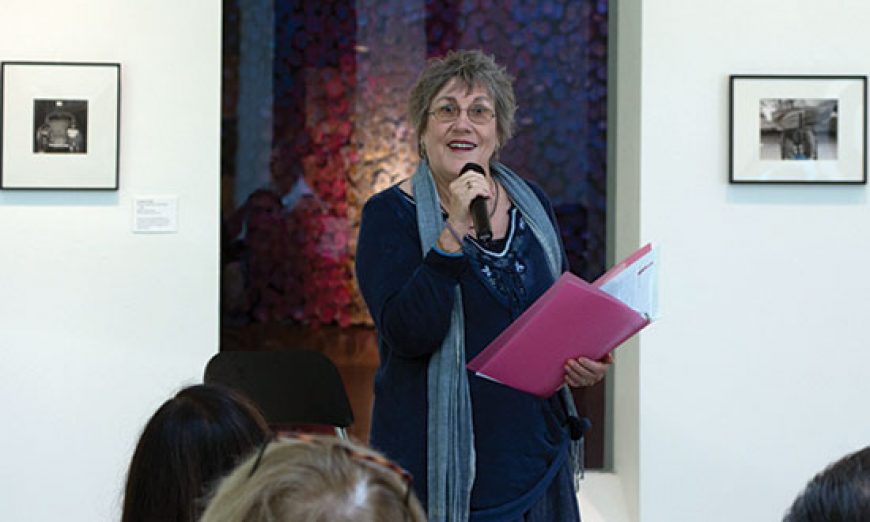Widely touted as one of the most influential photographers in American history, Dorothea Lange documented life through the lens of her camera. While not everyone knows the title of her works, her Great Depression photos are an iconic part of one of the nation’s most trying times.
Her works have traveled the country and while many of her famous photos have been on display, her personal photographs have rarely been seen, until now.
Santa Clara’s Triton Museum of Art has begun a series of exhibitions putting artists with disabilities on display. The first ArtsAbled show featured five blind artists and the museum is currently exhibiting artists who have not let physical ailments, like cerebral palsy, hinder their ability to create. As part of this series, the Triton’s Chief Curator Preston Metcalf thought it would be time to feature Lange’s work, as she was crippled by Polio at the age of 10, walked with a limp and never let her ailment slow her down. Through a series of fortunate events, Metcalf was connected to Dixie Dixon, Lange’s daughter-in-law. Dixon, who was married to Lange’s eldest son, Daniel, until his death, loaned the Triton 40 pieces from her collection of family and personal photographs, and on Aug. 30 participated in the museum’s Brown Bag Lunch program.
Dixon, who said she never had the pleasure of meeting Lange, felt as if she had. “I felt as though I knew her because she was in our lives so much and [Daniel] gave presentations about her often.” She also said her late husband wrote frequently about his mother, penning numerous essays on her.
Through a series of known quotes, letters and stories, Dixon shared the story of Lange’s life in the museum’s rotunda.
“People trusted her and that’s why they seemed so much at ease,” she said. “They’re poised, but not posed. She would talk to them for a few minutes before she took their portraits, until they became unafraid to be themselves. She said no subject could evoke anything that was false for every long.”
Dixon said that because of her mother-in-law’s disease, she worked slowly and deliberately, never wasting frames, and believed in the power of the human face.
“To Dorothea,” said Dixon, “the universal language was the human face. She said, ‘we have only one universal language and that’s the human face, as the expressions are understandable all over the world. Its shapes and meaning—explosions of emotion—all concentrate on just that one part of the anatomy.’”
Although rarely behind the camera, Dixon said two of Lange’s photographs—one in Ireland of a man holding two sheep and one often seen on display of a man standing on a streetcar in San Francisco—were actually taken by Dixon’s husband, although they have attributed to his mother.
“She said the camera is an instrument that teaches people to see without using the camera,” Dixon said, adding “[Her photographs] asked rather than answered questions. They expressed wonder and evoked mystery … Her work, I believe, continues to inform, to eliminate, and to inspire.”
Dorothea Lange: Homeward Views is at 1505 Warburton Ave. until Oct. 29. Visit www.tritonmuseum.org/exhibitions_lange.php for more information.






